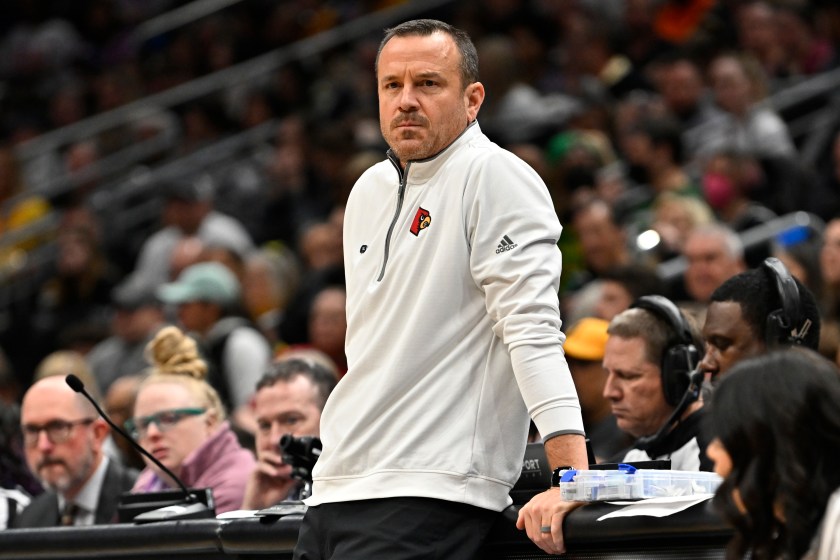If you were looking for your favorite women's basketball team this summer, chances are it was in Europe.
Videos by FanBuzz
"We saw pretty much everybody over there," Florida State coach Brooke Wyckoff said. "We passed by Georgia Tech in Croatia."
"We saw 10 teams over there while we were there," Yellowjackets coach Nell Fortner agreed.
In addition to Tech — which visited Spain in addition to Croatia — and the Seminoles, the ACC also saw Clemson visit Greece, Notre Dame pull the Croatia-Greece double, and Miami travel to France and Greece. Virginia Tech also spent time in Greece, and Boston College went to Italy. Notre Dame is heading back to France to open the regular season, and Louisville hit two foreign countries in this hemisphere, visiting Canada and the Virgin Islands.
Across the country, 59 women's teams took international trips, spending a total of nearly two years—620 days—outside the United States. The Big Ten matched the ACC's eight teams taking trips, while the SEC (six teams), Big 12 (four), Pac 12 (four) and Big East (three) weren't far behind, not to mention the 26 teams from mid-major conferences that also managed to fund foreign travel. The list includes Wofford, who spent 11 days in France, Stephen F. Austin—11 days in Italy—and Southern Utah, which got away for 12 days in Australia. Three University of California schools earned frequent flyer miles—UC Davis (Italy), UC Irvine (Guadeloupe) and UC San Diego (Italy).
The women's teams hit a combined 18 different countries. Greece was by far the most popular, with 28 teams visiting. Italy saw two dozen American teams. The itineraries ranged from Slovenia to Senegal, Portugal to Costa Rica.
College teams—men and women—have been heading overseas during the offseason for generations. There's obviously a recruiting benefit to be seen as a program that takes its athletes on luxury trips. It also gives squads more time together to gel and begin to build chemistry prior to the start of preseason practice. But there's never been a stampede to the travel agency quite like this.
The reason for the rush? The three letters that seem to explain everything that's new or different about college sports these days: NIL.
How Women's Basketball is Circumventing NIL Rules
The NCAA's rule change a few years ago, allowing athletes to profit on their names, images and likenesses, created a high-dollar feeding frenzy across college sports that many have likened to the Wild West, with questionable offers and shady dealings all around.
It turns out that the arrangement may be even sketchier than many people thought.
"It was a little NIL vacation," Louisville coach Jeff Walz said. "We can't give them any NIL money, but we can give them experiences. That's what we did."
While Walz is right that the schools can't directly provide their student-athletes with NIL cash, they can pull out all the stops to make it easier for all of them to cash in, and that's what's actually going on with the sport-wide run for the border.
To understand what is going on, it helps to look at the rosters of the teams taking the trips, and the ones who didn't. The eight ACC teams to go overseas this summer have a combined 25 international students on their rosters. All eight teams have at least one, and six of the eight have multiple. Georgia Tech, who visited Spain, has three Spanish students, as well as a Lithuanian and a Canadian. Louisville, who played in a tournament in Canada before heading to the Virgin Islands, has a player from Canada as well as ones from the Netherlands, Nigeria and Turkey.
Meanwhile, the seven ACC teams that passed on foreign trips this year have a combined 12 international players, fewer than half as many as the world travelers. Only three have multiple international players, and one, UNC, has none.
Most international student athletes are in the country on F-1 student visas, which prohibit them from earning income from off-campus employment. NIL money, of course, has to come from off-campus sources. There is some grey area into exactly what is and isn't allowed, but this is clear—the problem only exists inside the U.S. border.
When asked about NIL deals at ACC media day, Louisville's Merissah Russell, who joined her team on the four-game trip to Toronto, said, "I'm actually an international student. I'm from Canada. I can only do deals when I'm on Canadian soil."
Louisville headed to the U.S. Virgin Islands after the Canadian tournament, spending time on St. Thomas and St. John, but coach Walz was sure to point out, "We took them over to the BVI (British Virgin Islands). International kids, you've got to take them out of the U.S. to be able to earn any NIL opportunities."
It's no surprise, then, that many of the trips were funded by large donors to the programs, many of whom traveled with the team on the trip, allowing them to be right there with the players when they set foot on foreign soil.
"We had tremendous donors that helped us along the way," Virginia Tech coach Kenny Brooks said.
"We had a large group of donors and supporters with us," Miami coach Katie Meier said.
So, while UNC (no international players) spent time whitewater rafting in Charlotte and playing in a pickleball tournament near campus, UVA (one international player) took a team trip to New York City to watch the WNBA Finals, and Wake Forest (one international player) went axe throwing in Winston-Salem, much of the rest of the league was jetting across the Atlantic and coming back with full pockets.
"It's just a matter of figuring out the rules and playing within the rules," Walz said.
![SOUTH BEND, IN - JANUARY 26: Head coach Brooke Wyckoff of the Florida State Seminoles is seen during the game against the Notre Dame Fighting Irish] at Joyce Center on January 26, 2023 in South Bend, Indiana.](https://fanbuzz.com/wp-content/uploads/sites/5/2023/10/GettyImages-1246628216-e1698328590910.jpg?w=1056)
